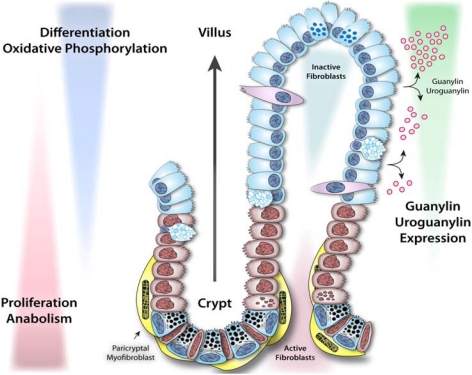Figure 4.
GC-C signaling regulates homeostatic programs along the crypt-villus axis in the intestinal epithelium. The intestinal epithelium undergoes continuous regeneration and differentiation along the crypt-villus axis. Stem cells residing near the bottom of crypts give rise to rapidly proliferating progenitor cells, which subsequently differentiate into functional enterocytes. Guanylin and uroguanylin are secreted in a gradient along the crypt-villus axis, while guanylin is primarily secreted in colon and uroguanylin is mainly secreted in small intestine. Ligand activation of GC-C signaling reprograms proliferative and metabolic circuits in intestinal epithelial cells and ensures a homeostatic balance between proliferation and differentiation. Adapted from [84].

